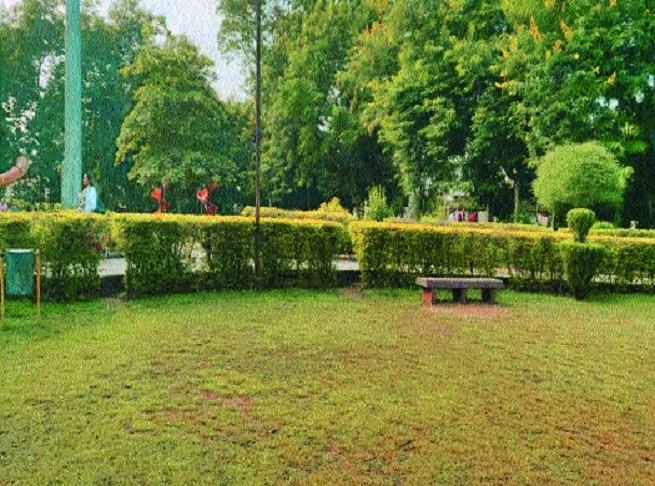‘Per-capita green space of city is shrinking’
| Date :29-Mar-2021 |

By Kaushik Bhattacharya :
The green space for the city is limited to 2.32-0.27 sq mtr which should be 10-12 sq mtr as per URDPFI-14 guidelines
42% urban dwellers travelling over 500 m to use a green space
The per-capita green space of Nagpur city is limited to 2.32-0.27 sq mtr and it is shrinking further, revealed a study conducted by CSIR-National Environmental Engineering Research Institute (CSIR-NEERI) recently. As per Urban and Regional Development Plan Formulation Implementation (URDPFI) guidelines, 2014 issued by Ministry of Housing and Urban Affairs recommend that per-capita green space is 10-12 sq mtr and 1.2 to 1.4 Ha of green space per 1,000 population but it is very less in Nagpur city.
The survey took place at 65 public urban green spaces (parks, gardens and playgrounds) to assess the health of public green spaces in the city and it was observed that many of them were not managed appropriately and hence, do not have sufficient green cover to fulfil growing demands of urban-dwellers of Nagpur. West Nagpur emerged as the best zone that have well managed green spaces followed by East, North and Central Nagpur. East and North of Urban Nagpur were having largest number (4) of insufficiently managed parks followed by one each in Central and Western Zone. Dr Shalini Dhyani, Senior Scientist CSIR-NEERI along with Dr Atya Kapley, Head Director’s Research Cell, CSIR-NEERI designed and carried out the survey.
The project was overseen by Dr Rakesh Kumar, Director, CSIR-NEERI. Three researchers involved in door-to-door survey with many important questions translated in local language out to 1,050 households in 100 wards of Nagpur in early 2020 before the pandemic lockdown. Though, 51 per cent of survey respondents agreed that Nagpur has sufficient greenery and 23% respondents strongly disagreed to it. It was interesting to note that 42% urban-dwellers were travelling more than 500 m to use a green space, 28% were travelling 200-500 m, 20.5% were 50-200 m while, only 9% reported ease of access and this is alarming for a city like Nagpur that was once one of the greenest cities in Western India.
As per the survey, 44% citizens were visiting a park or a garden on daily basis, 35% during weekends, 15% once a month because their busy schedules or insufficient access followed by 7% who mentioned accessibility and maintenance issues behind their infrequent visits. “This interest of large number of respondents shows the awareness and connectivity with nature of locals that needs to be further enriched by reducing the demand supply gap to urban green access” stated Dr Atya Kapley to The Hitavada. Total 50% of respondents were fine with the management of public green spaces in the city while rest of 50% were totally dissatisfied. Study highlighted 50 locations as potentially healthy green zones of the city followed by 44 that needed focus and hand holding for restoring them and ensuring that remaining green pockets don’t degrade and 19 areas emerged as critical areas in terms of green zones that will require immediate attention using Natural and Green Infrastructure (GI). Dr Dhyani recommends “Prioritising actions and funds in respective green, orange and red areas by initiating ward specific management plans can help but specific needs depending on ward population, build up density and area needs to be considered during planning itself”.